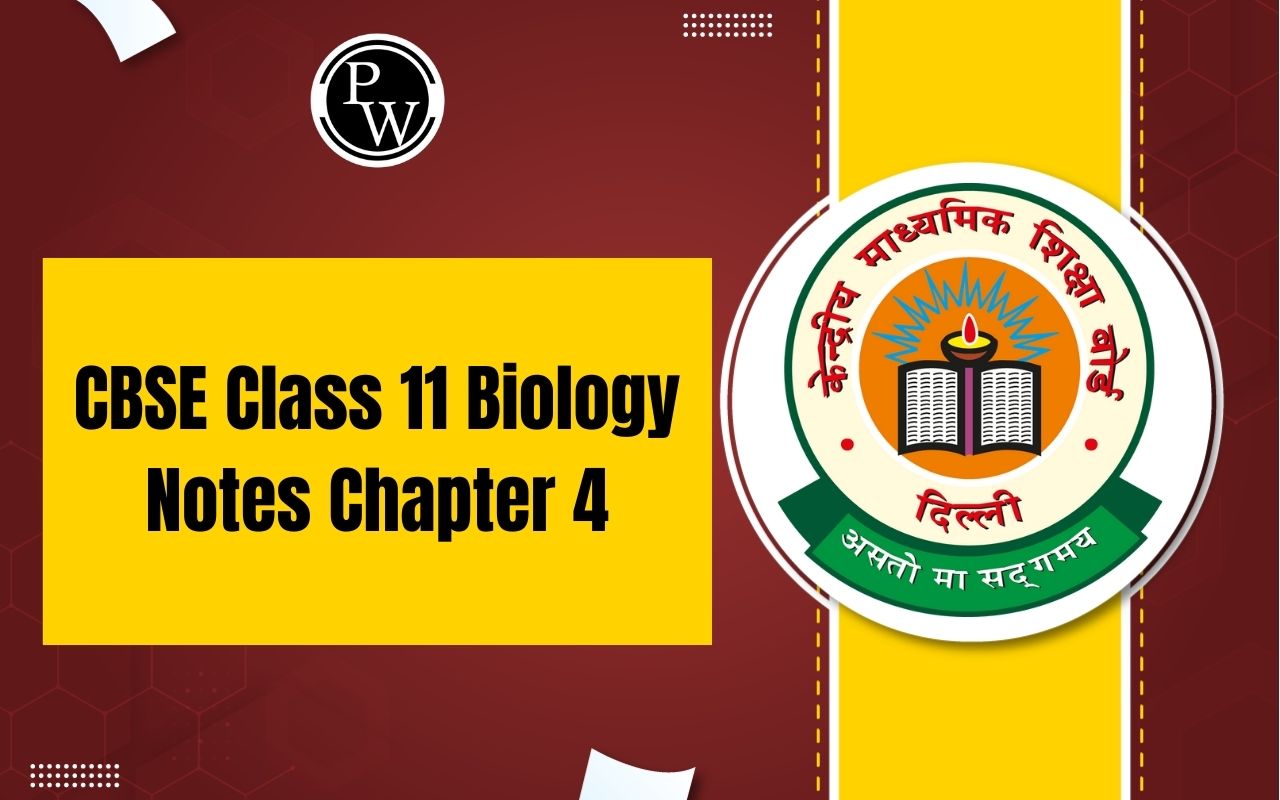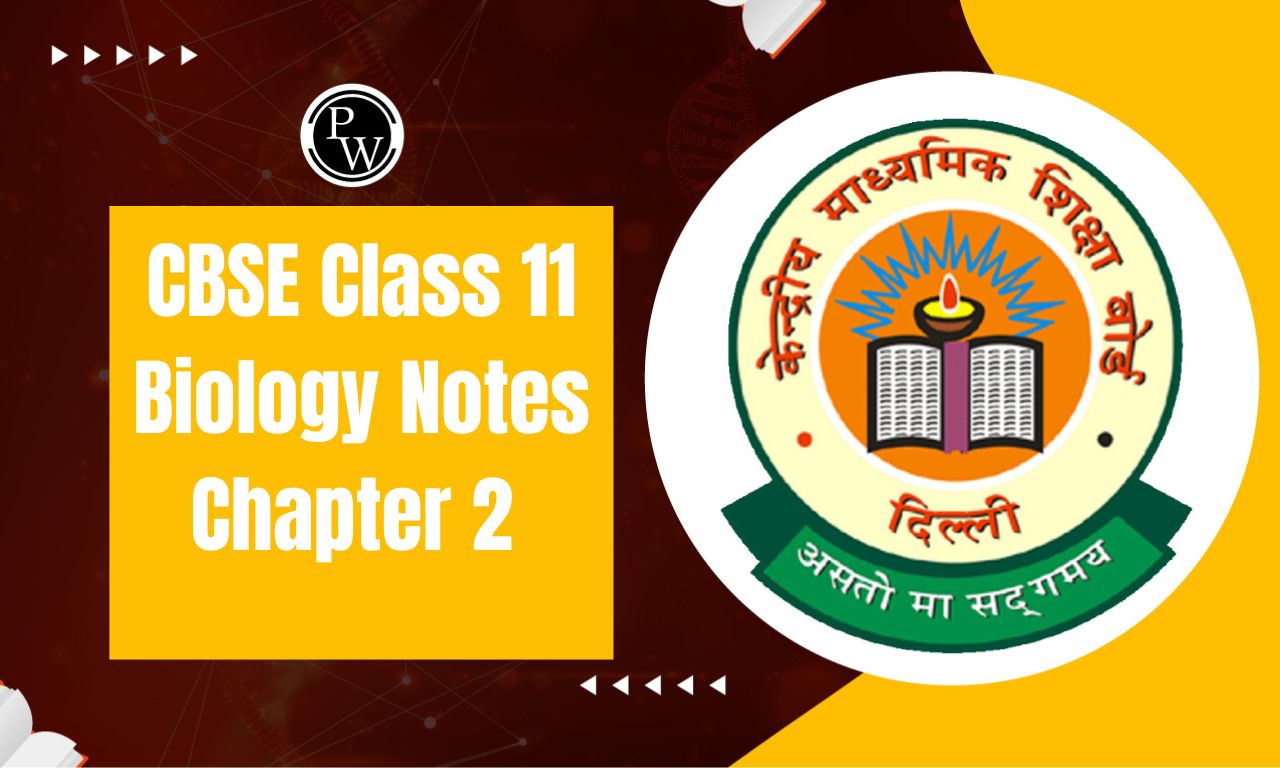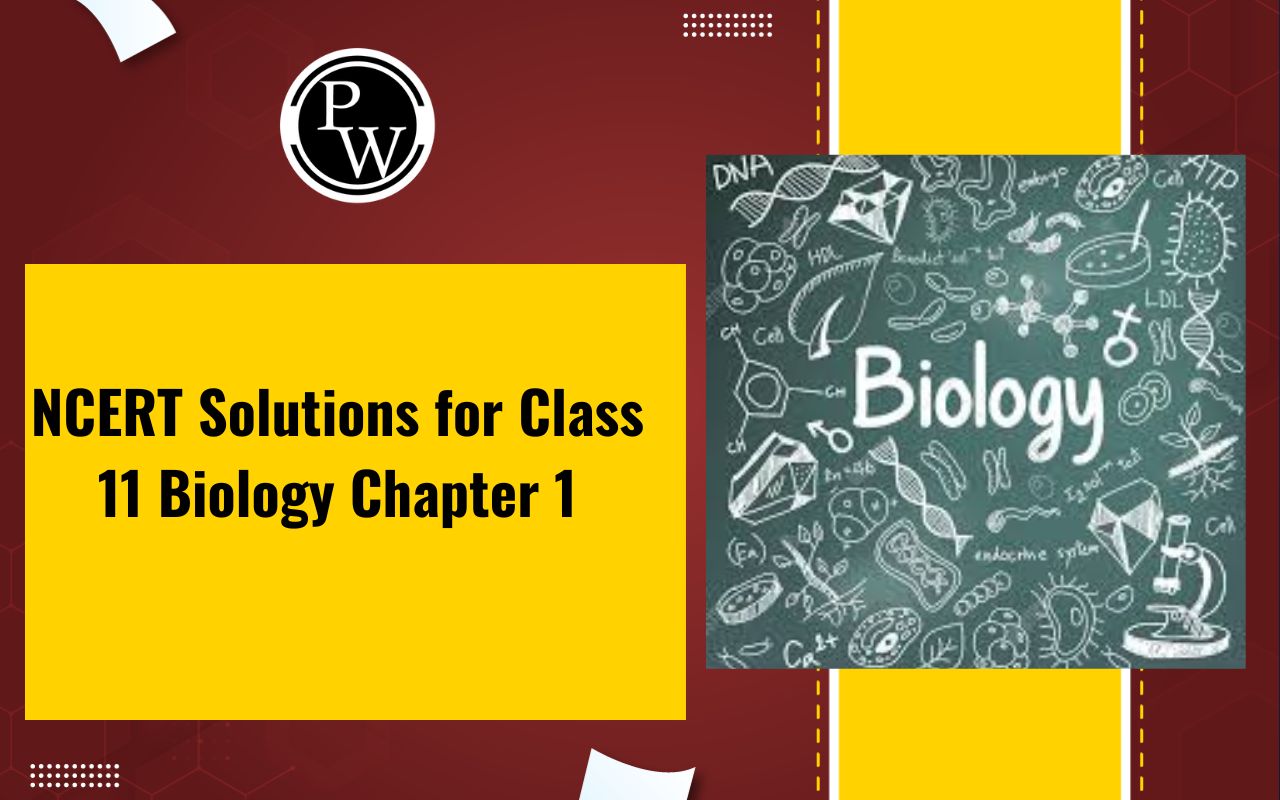
NCERT Solutions for Class 11 Biology Chapter 5: Chapter 5 of Class 11 Biology Morphology of Flowering Plants question answers, explores the structural organization and forms of flowering plants. It provides an in-depth understanding of roots, stems, leaves, flowers, and fruits, emphasizing their modifications for various functions like storage, support, and reproduction.
The chapter also highlights inflorescence types, floral structures, and the significance of fruits and seeds in plant reproduction. Essential botanical terms, such as venation, phyllotaxy, and placentation, are explained, aiding students in identifying plant morphology. This chapter lays a foundation for comprehending plant anatomy, physiology, and taxonomy, crucial for advanced biological studies.NCERT Solutions for Class 11 Biology Chapter 5 Overview
Chapter 5 of Class 11 Biology Morphology of Flowering Plants question answers focuses on understanding the external structures and adaptations of flowering plants, including roots, stems, leaves, flowers, fruits, and seeds. This knowledge is crucial for identifying plant species, studying their classification, and understanding their survival strategies. The chapter highlights the importance of plant modifications for storage, support, reproduction, and defense. It introduces terms like phyllotaxy, venation, and placentation, which are vital for botanical studies. These concepts form the foundation for advanced topics in plant anatomy, physiology, and taxonomy, enabling students to appreciate the diversity and functionality of plant life.NCERT Solutions for Class 11 Biology Chapter 5 PDF
Chapter 5 of Class 11 Biology, Morphology of Flowering Plants, covers the external structures and modifications of plants, including roots, stems, leaves, flowers, fruits, and seeds. Understanding these concepts is essential for studying plant classification and adaptations. To help students master this topic, we have provided comprehensive NCERT Solutions for Chapter 5 in a downloadable PDF format below. These solutions will aid in concept clarity and exam preparation.NCERT Solutions for Class 11 Biology Chapter 5 PDF
NCERT Solutions for Class 11 Biology Chapter 5 Morphology of Flowering Plants
Below is the NCERT Solutions for Class 11 Biology Chapter 5 Morphology of Flowering Plants -1. What is meant by modification of root? What type of modification of root is found in the:
(a) Banyan tree (b) Turnip (c) Mangrove trees
Solution:
Roots can alter their size, shape, or even regular functioning in order to perform certain secondary duties or a particular adaption. The term "root modification" describes this. a) The roots of banyan trees grow from the branches and descend far into the ground to provide the tree with mechanical support. Prop root is the term for this type of alteration. b) A fleshy taproot is a sort of root alteration found in turnips that is altered to store food. b) To supply oxygen to the tree, mangrove trees have changed their roots into a pneumatic structure. Pneumatophores, or respiratory roots, are the term for this kind of alteration.2. Justify the following statements on the basis of external features:
(i) Underground parts of a plant are not always roots.
(ii) The flower is a modified shoot.
Solution:
i) Stems of certain plants, such as ginger, stay underground for vegetative reproduction and food storage. In a similar vein, potatoes' modified stems stay underground. The existence of internodes and nodes—in this case, buds and scale leaves—is indicated by potato tubers. The potato tuber is confirmed to be a stem by the presence of an apical bud at its tip. These examples so demonstrate that subterranean components are not necessarily roots. ii) The axis of the stem condenses as internodes lay closer to one another, and apical meristems give rise to floral meristems. As a result, stems are replaced with floral appendages. The flower's status as a modified shoot is thus justified.3. How is a pinnately compound leaf different from a palmately compound leaf?
Solution:
The differences are as follows:| Pinnately compound leaf | Palmately compound leaf |
| Many numbers of leaflets are present on a common axis | Several leaflets are attached to a common point. |
| Leaflets are attached to a common axis called the rachis | Leaflets are attached to a common point on the leaf stalk. |
| Leaflet-bearing axis is the continuation of the petiole | Leaflet-bearing axis is very short. |
| Ex: Neem leaves | Ex: Cotton leaves |
4. Explain with suitable examples the different types of phyllotaxy.
Solution:
The pattern of leaf arrangement on the stem or branch is called phyllotaxy. For example, in China rose, mustard and sunflower plants, a single leaf arises at each node alternately. Phyllotaxy is of three types, namely:- Alternate – the emergence of a single leaf at each node in an alternate manner. Example – Hibiscus
- Whorled – whorl is formed when two or more leaves emerge at a node. Example – Alstonia
- Opposite – emergence of a pair of leaves at every node, facing opposite to each other. Example – guava
5. Define the following terms:
(a) aestivation
(b) placentation
(c) actinomorphic
(d) zygomorphic
(e) superior ovary
(f) perigynous flower
(g) epipetalous stamen
Solution:
a) Sepals or petals’ arrangement in a floral bud concerning other members of the same whorl is called aestivation. Different types of aestivation are:- Twisted – if one margin of the appendage overlaps the adjacent one, it is twisted, either clockwise or anti-clockwise. Example – cotton
- Valvate – In a whorl, when petals or sepals just touch each other at the margin without overlapping, it is valvate. Example – Calotropis
- Imbricate – It is imbricate when petals or sepals overlap each other but not in any definite direction as observed in gulmohar
- Vexillary – The largest petal overlaps the two lateral petals, which in turn overlap the two smallest anterior peels in vexillary aestivation. Example – Bean flower
- Marginal – The placenta forms a ridge through the ventral suture of the ovary. Ovules are borne on the ridge to form two rows. Example – Pea
- Axile – placenta is axial, and ovules are attached to it in a multilocular ovary. Example – lemon
- Parietal – ovules develop on the inner wall of the ovary or on the peripheral. It is single-chambered, but due to the formation of a false septum, it becomes two-chambered. Example- Mustard
- Basal – The placenta develops at the base of the ovary, wherein a single ovule is attached to it. Example – Marigold
- Free central –ovules are borne on the central axis, and septa are absent. Example – Primrose
6. Differentiate between
(a) Racemose and cymose inflorescence
(b) Fibrous root and adventitious root
(c) Apocarpous and syncarpous ovary
Solution:
The differences are as follows: (a) Racemose and cymose inflorescence| Racemose inflorescence | Cymose inflorescence |
| Inflorescence in which young flowers are present at the tip and older flowers are arranged at the base | Inflorescence in which old flowers are present at the tip and young flowers are arranged at the base |
| Main axis continues to grow and produce flowers laterally. | The main axis has limited growth, which terminates into a flower. |
| Fibrous roots | Adventitious roots |
| The primary root is short-lived and is replaced by a large number of roots in monocotyledons | Roots arise from parts of the plants other than the radicle. |
| Example: Wheat | Example: Banyan tree |
| Apocarpous ovary | Syncarpous ovary |
| In an apocarpous ovary, two or more carpels are free | In a syncarpous ovary, two or more carpels are fused |
| Example: Lotus | Example: Mustard |
7. Draw the labelled diagram of the following: (i) gram seed (ii) V.S. of maize seed.
Solution:
(i) Gram seed
(ii) V.S. of maize seed
8. Describe modifications of the stem with suitable examples.
Solution:
Modifications of stem:Food storage:
Underground stems of potato, ginger, and turmeric are modified to store food in them. They act as organs of perennation to tide over conditions unfavourable for growth.Tendrils:
Tendrils are slender and spirally coiled and develop from axillary buds. These stem tendrils help plants climb, such as in gourds (cucumber, pumpkins, watermelon) and grapevines.Thorns:
Stems of auxiliary buds get modified into woody, straight and pointed thorns. Thorns protect plants from animals. Several plants of dry regions alter their stems into either fleshy cylindrical structures or flattened. Ex: citrus plants. They possess chlorophyll and perform photosynthesis.Other modifications:
Vegetative reproduction: Certain plants, including strawberries, grass, and others, have underground stems that expand to new niches and produce new plants when their older sections die. A thin lateral branch emerges from the base of the main axis of plants such as mint and jasmine, and after growing aerially for a while, it arches downward to touch the earth.9. Take one flower from each of the families Fabaceae and Solanaceae and write its semi-technical description. Also, draw their floral diagram after studying them.
Characters of Fabaceae
- They are trees, shrubs herbs having roots with root nodules.
- Stems are erect or climber
- Leaves are alternate, pinnately compound or simple and leaf bases are pulvinate, stipulate with reticulate venation.
 Inflorescence: racemose
Flower: bisexual, zygomorphic
Calyx: sepals five, gamosepalous; valvate/imbricate aestivation
Corolla: petals five, polypetalous, papilionaceous, consisting of a posterior standard, two lateral wings, two anterior ones forming a keel (enclosing stamens and pistil), vexillary aestivation
Androecium: stamens ten in number, diadelphous, anther dithecous
Gynoecium: ovary superior, monocarpellary, unilocular with many ovules, style single
Fruit: legume; seed: one to many, non-endospermic
Economic importance:
Plants of these families are pulses used as fodder and sweet pea.
Ex: Peas, trifolium,
Floral diagram:
Inflorescence: racemose
Flower: bisexual, zygomorphic
Calyx: sepals five, gamosepalous; valvate/imbricate aestivation
Corolla: petals five, polypetalous, papilionaceous, consisting of a posterior standard, two lateral wings, two anterior ones forming a keel (enclosing stamens and pistil), vexillary aestivation
Androecium: stamens ten in number, diadelphous, anther dithecous
Gynoecium: ovary superior, monocarpellary, unilocular with many ovules, style single
Fruit: legume; seed: one to many, non-endospermic
Economic importance:
Plants of these families are pulses used as fodder and sweet pea.
Ex: Peas, trifolium,
Floral diagram:

Characters of Solanaceae
- Commonly termed as potato family, Solanaceae are mostly herbs, shrubs and rarely small trees
- Stems are herbaceous, rarely woody, aerial; erect, cylindrical, branched, solid or hollow, hairy or glabrous, underground stem in potato.
- Leaves are alternate, simple, rarely pinnately compound, and exstipulate with reticulate venation.
 Floral Characters
Inflorescence: Solitary, axillary or cymose as in Solanum
Flower: bisexual, actinomorphic
Calyx: sepals five, united, persistent, valvate aestivation
Corolla: petals five, united; valvate aestivation
Androecium: stamens five, epipetalous
Gynoecium: bicarpellary obligately placed, syncarpous; ovary superior, bilocular, the placenta is swollen with many ovules, axile
Fruits: berry or capsule
Seeds: many, endosperms
Economic importance
Plants belonging to this family are used as food, spices, medicines and ornamentals
Floral diagram:
Floral Characters
Inflorescence: Solitary, axillary or cymose as in Solanum
Flower: bisexual, actinomorphic
Calyx: sepals five, united, persistent, valvate aestivation
Corolla: petals five, united; valvate aestivation
Androecium: stamens five, epipetalous
Gynoecium: bicarpellary obligately placed, syncarpous; ovary superior, bilocular, the placenta is swollen with many ovules, axile
Fruits: berry or capsule
Seeds: many, endosperms
Economic importance
Plants belonging to this family are used as food, spices, medicines and ornamentals
Floral diagram:
 Ex: Brinjal, chilli, ashwagandha, petunia
Ex: Brinjal, chilli, ashwagandha, petunia
10. Describe the various types of placentations found in flowering plants.
Solution:
Placentation in flowering plants refers to the arrangement of ovules within the ovary. The main types are:- Marginal : Ovules are arranged along the margin of a single carpel, as in peas.
- Axile : Ovules are attached to a central axis, as in tomato and lemon.
- Parietal : Ovules develop on the inner wall of the ovary, as in mustard.
- Basal : Ovules are attached to the base of the ovary, as in sunflower.
- Free-central : Ovules are borne on a central column, as in Dianthus.
11. What is a flower? Describe the parts of a typical angiosperm flower.
Solution:
- The flower is the reproductive organ of an angiosperm. It is a modified shoot in which the floral meristem replaces the shoot apical meristem.
- On the enlarged end of the pedicel or stalk, called the receptacle or thalamus, a typical flower has four different types of whorls arranged consecutively. These four components fall under the categories of reproductive and auxiliary organs. They are referred to as perianth when the calyx and corolla are not separate.
- The reproductive organs are the androecium and gynoecium, whereas the accessory organs are the calyx and corolla.
Parts of the flower are as follows:
1. Calyx: It is the lowermost and outermost whorl of the flower, and they are called sepals. They render support and protection to other floral structures. 2. Corolla: Corolla is composed of petals which are brightly coloured to attract insects for pollination. Located inner to the sepals and outside the stamens. 3. Androecium: Androecium consists of stamens which represent male reproductive organs of a stalk, filament and an anther. Anthers are bilobed, where each lobe has two chambers, the pollen sacs where pollen grains are produced. The stamens may be united with other members, namely petals or amongst themselves. 4.Gynoecium: The female reproductive component of a flower, known as the gynoecium, is made up of one or more carpels, which are further divided into three parts: the stigma, ovary, and style. The style is an extended tube that is carried by the larger ovary at the base. The style, whose tip bears the stigma where pollen grains are received, connects the ovary to the stigma. One or more ovules connected to the placenta are carried by each ovary.12. How do the various leaf modifications help plants?
Solution:
Leaves fundamentally perform photosynthesis. But in some plants, leaves are modified to carry out different functionalities, as mentioned below: Tendrils: Tendrils helps with climbing as in peas Spines: Thorns are modified leaves that protect plants from animals, serving as an organ of defence. Pitcher: Leaves of this plant are modified into pitcher-like structures containing digestive juices aiding in trapping and digesting insects. Synthesis of food: Fleshy leaves of garlic and onion store some food. These are modified leaves. Phyllodes emerging from the petioles of leaves synthesize food. Phyllodes are flattened, green structures that replace the short-lived leaves.13. Define the term inflorescence. Explain the basis for the different types of inflorescence in flowering plants.
Solution:
The arrangement of flowers on the floral axis is known as inflorescence. Depending on whether the apex develops into a flower or keeps growing, there are two main forms of inflorescence. They are as follows: An inflorescence known as a racemose has flowers that are borne laterally in acropetal succession, meaning that the older blooms are at the base and the newer flowers are close to the apex. The primary axis keeps expanding. Cymose: A kind of inflorescence with restricted growth where the main axis ends in a flower. The arrangement of flowers is basipetal, with older flowers at the apex and younger flowers close to the base.14. Write the floral formula of an actinomorphic, bisexual, hypogynous flower with five united sepals, five free petals, five free stamens and two united carpels with superior ovary and axile placentation.
Solution:
The floral formula is as follows:
15. Describe the arrangement of floral members in relation to their insertion on the thalamus.
Solution:
The arrangement of floral members in relation to their insertion on the thalamus are of three types: Hypogynous flowers are the ones in which the gynoecium occupies the highest position while the other parts are situated below it. The ovary is said to be superior. Example – Brinjal. Perigynous flowers are the ones in which gynoecium stays in the centre and other parts of the flower are located on the rim of the thalamus, almost at the same level. The ovary is said to be half inferior. Example – Rose.
Perigynous flowers are the ones in which gynoecium stays in the centre and other parts of the flower are located on the rim of the thalamus, almost at the same level. The ovary is said to be half inferior. Example – Rose.
 Epigynous flowers are the ones in which the margin of the thalamus grows upwards, enfolding the ovary. Here the ovary gets fused with the thalamus, and other parts of the flower arise above the ovary. Hence ovary is said to be inferior. Example – Flowers of guava
Epigynous flowers are the ones in which the margin of the thalamus grows upwards, enfolding the ovary. Here the ovary gets fused with the thalamus, and other parts of the flower arise above the ovary. Hence ovary is said to be inferior. Example – Flowers of guava

Benefits of Using NCERT Solutions for Class 11 Biology Chapter 5
Comprehensive Understanding : Provides detailed explanations for concepts like roots, stems, leaves, flowers, and modifications.
Exam Preparation : Helps students answer textbook and exam questions effectively with step-by-step solutions.
Concept Clarity : Simplifies complex topics like phyllotaxy, placentation, and inflorescence.
Time-Saving : Offers ready-made answers, reducing the time spent on searching for solutions.
Confidence Boost : Enhances problem-solving skills and confidence in tackling diverse questions.
Aligned with Syllabus : Ensures complete coverage of the NCERT syllabus for better grades.
NCERT Solutions for Class 11 Biology Chapter 5 FAQs
What is the purpose of plant morphology?
What are the classification of plant morphology?
What is the whole plant morphology?
What is the difference between plant morphology and plant anatomy?










